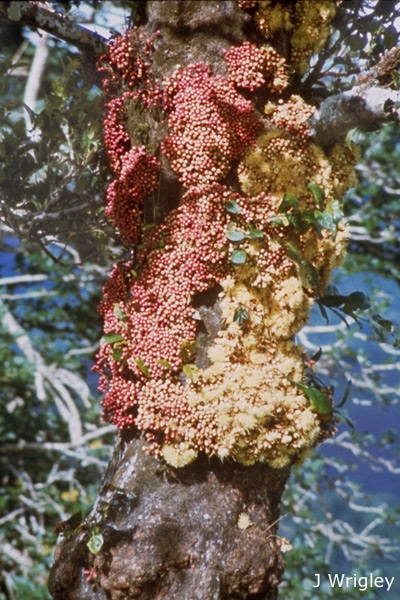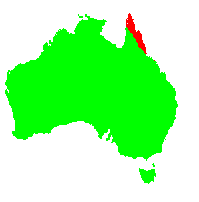General Description:
Syzygium is a genus of over 1000 species occurring in tropical and subtropical rainforests. There are about 50 species in Australia occurring in the Kimberly region of Western Australia, the Northern Territory, Queensland and northern New South Wales. The genus includes species previously classified in the genus Acmena as well as a number previously classified as Eugenia, including S.cormiflorum.
Syzygium cormiflorum is a tree which can reach 30 metres high in rainforests, though considerably smaller, 8-10 m, in cultivation (as is the case with many rainforest species). The habit is erect, with a straight trunk which may become buttressed on large specimens. The leaves are oblong, elliptic to almost lanceolate and about 60 to 210 mm long by 25 to 115 mm wide. The new growth is pink or purple in colour. The flowers are remarkable in that they appear on the trunk (described as cauliflorous), mainly in spring but they may occur in any season except summer. The flowers produce copious nectar and are up to 50 mm in diameter. They are followed by ovoid fruits, which are white, cream, pink or even reddish and around 30-60 mm long. Although technically edible they are not particularly palatable.
Despite its origin in tropical areas, S. cormiflorum can be grown in temperate and subtropical climates. Bumpy satinash is rarely seen in cultivation, despite its distinctive horticultural features. Furthermore it can be fairly compact in cultivation with a crown of foliage of only 2-3 metres as it grows taller. Unfortunately it may take 8-12 years to flower from seed, but its flushes of new growth are very attractive. It prefers rich soils and assured moisture in sun or dappled shade. Like other species of Syzygium, scale infestations are occasionally observed. This can be controlled by the use of white oil.
Propagation may be carried out from fresh seed, either by sowing the fruits whole or after removing the flesh. The species can also presumably be grown from cuttings of firm, current season’s growth.

Cauliflorous flowers of Syzygium cormiflorum
Photo: John Wrigley
 Australian Native Plants Society (Australia)
Australian Native Plants Society (Australia)